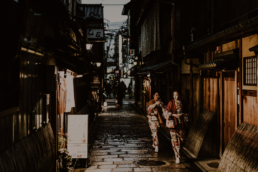Shikadamari, the deer gathering in Nara
One of Japan's most characteristic cities is Nara together with its deers and every year it is here that the Shikadamari takes place. But what exactly is this strange and unique phenomenon? What drives hundreds of deers to gather for an hour at this place in Nara Park every evening in summer?
Shikadamari, the phenomenon of the deer gathering in Nara
Author: Erika | Source: Soranews24.com
If you have ever been in the city of Nara, near the prefecture of Kyoto, probably one of the destinations you will have seen is Nara Park and its large deer population. The peculiarity of these deers is that they roam the city undisturbed, but not only that, they also ask for a lot of cookies! For this very reason, you may have had to run away from one of them while this curious deer was poking its nose into your bag.


However, if you've come to this city in the summer, you'll find these nice creatures much less noisy in the evening. In fact, after sunset, a very particular phenomenon called "shikadamari" happens. This Japanese term translates as "deer gathering point" and is an unofficial term coined especially for this wildlife event.
What is Shikadamari
After sunset on summer evenings, around 6:30 p.m., deers gather near Nara Park to stop in this particular place in front of the National Museum of Nara, right inside the park. Indeed, it is not unusual to find deers relaxing in the park, but it is rare to see a large number of these animals all gathered in the same spot. The most disconcerting thing is that they all gather in the same place, at the same time and for the same amount of time. From 6:30 p.m. to 7:00 p.m., you can see the deers sitting in silence. However, after 7:00 p.m., they stand up and return to the different areas of the park.


According to a survey by the Nara Deer Preservation Foundation, the Park is home to about 1388 deer, and almost half the wildlife population participates in this gathering. What could that indicate?
Plausible explanations
Therefore, one of the plausible explanations for this phenomenon is that deers gather in this particular place to cool off. After all, with the hot temperatures of the Japanese summer, in this place we find a breath of fresh air instead. Despite everything, this very piece of land in front of the museum is one of the sunniest parts of the entire park during the day. Theoretically, therefore, the earth is very overheated, but perhaps it is this mix of warm earth and fresh air that attracts the deer to the shikadamari.

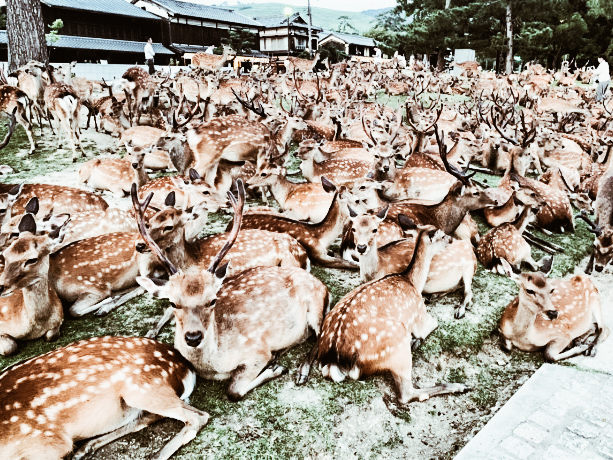
In this regard, the Nara Deer Preservation Foundation says:
"We have reports of deer gathering in front of the Nara National Museum. We don't even know why they gather there. We're sorry we can't be of any help".
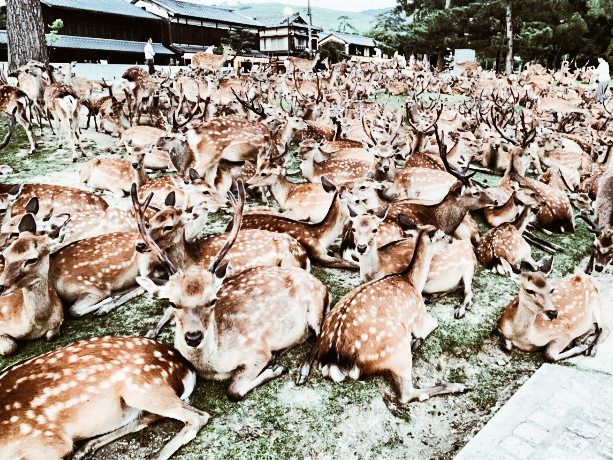
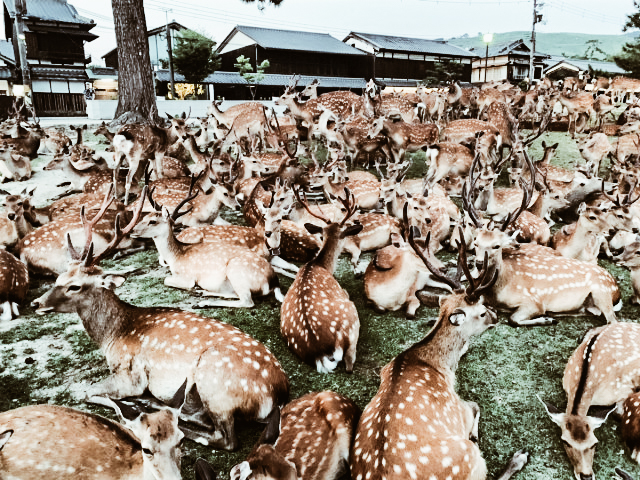
With this answer, therefore, the Shikadamari phenomenon remains to all intents and purposes one of the mysteries of Japan. And do you have any particular idea why deer gather every night in summer at this very spot in the park? Let us know on on our Facebook page or in the comments below!
Wood and Japanese architecture
If you have ever been to Japan or even seen photos, you will have noticed that Japanese architecture is characterized by the use of wood as the primary material. Today we see how this traditional material has become an emblem of Japanese architecture.
Wood, mold and fire in Japanese architecture
Author: Erika | Source: Nippon.com
Japan's wet environment has made it possible to develop an architectural style mainly focused on the use of wood. In fact, in summer, humidity levels reach peaks that we can hardly conceive of here in Europe. However, if you have been to Japan during the months of June and July, you will have noticed that you sweat even while standing still. For this very reason, in the history of this country, techniques and materials have been developed to help compensate for this problem. In fact, the raised floors and open spaces typical of traditional houses have guaranteed adequate ventilation to combat the accumulation of toxic mould. In addition, the wooden construction with mullions and beams not only helps against moisture but also becomes useful in the design for resistance to typhoons and earthquakes.
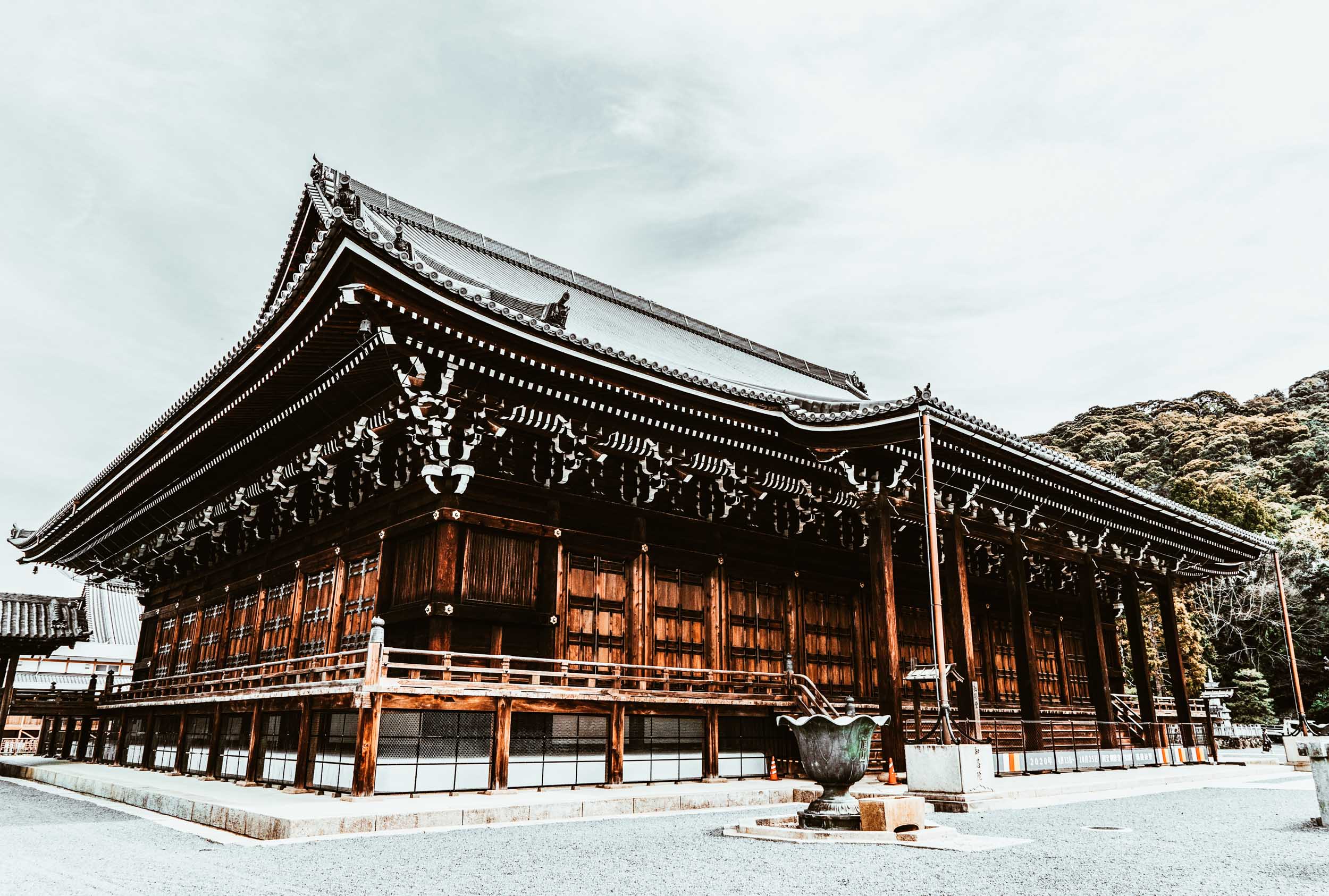

Although fires have been frequent in the history of Japan, historically the Japanese have built almost exclusively with wood. Certainly, the fire was a persistent problem and this is reflected in the severity of the current fire laws. However, judging by history, it seems that the major cause of the problem was the natural disasters that led Japanese architecture to take the forms we all know.
The constant presence of mould in Japanese architecture
Actually, mould is a constant problem not only for Japan but a little bit for the whole world. In fact, today we were able to create a solution by applying modern architectural techniques.
Much of Japan has ideal conditions for mould because of the various types of mushrooms present in the country. In addition, temperatures rarely fall below zero and humidity can last over 70% for long periods of time. These are all ideal conditions for mould to form, but traditional wooden construction alleviated this problem. In fact, with these construction techniques, the building was raised from ground level leaving the walls open so that air could flow freely in the spaces. Because of this problem, older buildings contain very little furniture and equipment. Temples, sanctuaries, palaces and traditional houses fall into this category.
Japan and tradition
As we all know, Japan is a very traditionalist country and Japanese architecture is no less. However there is a strong preference for the new, in fact, large companies do not hide to design houses to last about 30 years, after that the house should be demolished and rebuilt. This is almost inconceivable from a Western point of view, but reconstruction is a perfect way to completely eliminate mould, infestation and other problems.
The culture of reconstruction has, in fact, ancient roots in Japan because until the 8th century AD the death of an emperor was the cause of the displacement of the royal palace and the capital. Moreover, there was a saying in the Edo period that read "fire is one of the two flowers of Edo, as the city often blossomed". Whether the cause was fires or abrupt changes, these reasons have significantly lowered the average life of buildings. However, moving a house meant throwing everything except the wooden structure, the framing was in fact dismantled and reassembled with a fresh roof and curtain walls. In fact, this not only solved the problems of mould or other problems but also preserved the most durable parts of a house. Precisely for this reason, today we find extremely old and recycled beams and columns in many farmhouses.
Wood VS Metal
During the Tokugawa Shogunate, political decisions limited the use of metal fasteners and this was also an important factor in the development of carpentry in Japanese architecture. In fact, despite the fact that steel was already widely used, metal fasteners had no comparison with the longevity of wooden joints. In fact, in unseasoned wood, these fixings were strongly subject to seasonal shrinkage and expansion of the surrounding material. Also, when exposed to air, they are subject to rapid oxidation due to Japan's humid climate.
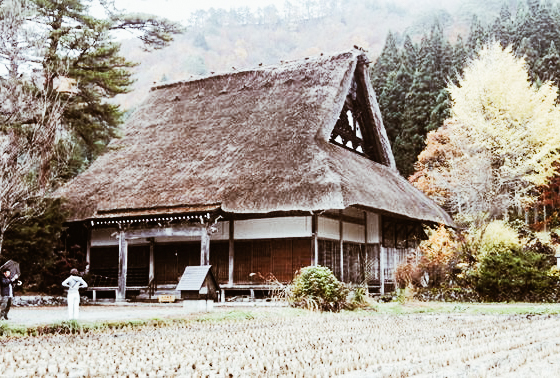
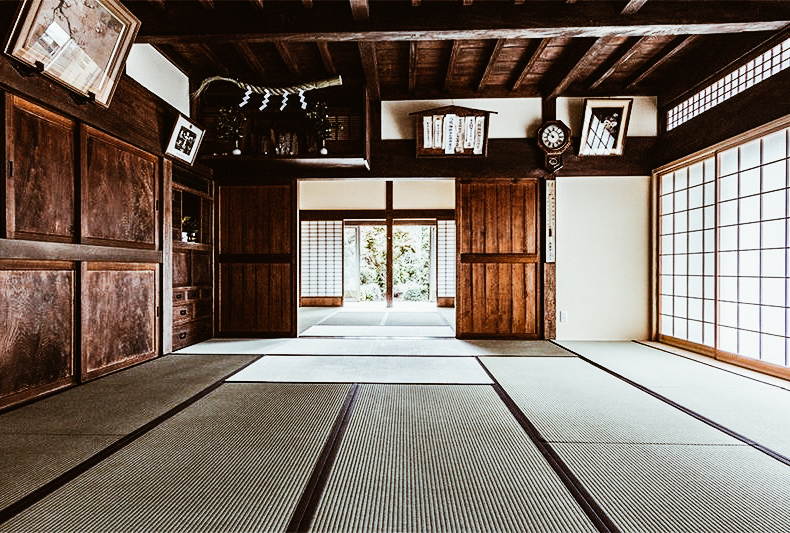
On the contrary, an all-wooden junction becomes stronger and stronger as time goes by. In fact, calculations show that the latter may be structurally more solid even in the centuries following construction. Wood gains in strength for 200-300 years after being cut, but gradually decreases after that. For this very reason, the heavy roofs of traditional Japanese architecture are impossible to build without an elaborate wooden structure.
To withstand the weather and typhoons, these roofs should be supported by large stone walls, but in a country where earthquakes are so common and typhoons so devastating, it becomes too impractical. In addition, during the rainy season, condensation would occupy and ruin all the walls. In traditional Japanese architecture, the entire wooden supporting structure is open for visual inspection, meaning that any water infiltration was easily identified and handled quickly.
Japanese architecture and earthquake-proof houses
As we well know, Japan is frequently hit by earthquakes that do not seem to create too much damage. This is not because earthquakes are less violent, but thanks to the anti-seismic techniques of Japanese architecture. In fact, earthquake resistance is the third reason why Japanese architecture primarily uses wood in its constructions.
In Western culture, houses are solidly bonded to the foundations, which makes them a solid earthquake-resistant box with walls strong enough to withstand lateral shocks. As a result, the building will move with the ground, however, making the occupants feel the full force of the earthquake. In Japanese culture, on the other hand, construction using wooden joints makes everything more flexible. In this way, the lateral energy of an earthquake is absorbed by the bending of the junctions themselves, allowing the building with a heavy roof to remain standing even during strong tremors. To make you understand better, many old buildings are constructed in a similar way to a wooden chair, with supporting pillars without walls connected both at the top, where the roof rests and at the bottom. This allows you to support the weight safely and dynamically.
Thanks to the use of this technique, most traditional buildings are not based on foundations or basements. However, one might expect that during an earthquake the structure will jump from the base stones, the masonry walls will break and the beams will bend or break. But a well-built wooden building remains standing, in fact even in contemporary construction basic insulation is becoming a standard for seismic design even though it is illegal in Japan.
So many forests equal so much wood
Here is the latest reason why we find this preference for wood in Japanese architecture. In fact, the ready availability of timber and the use in traditional construction, cypress and pine, for example, are ready for harvesting and use only after 40-60 years of growth. Japanese carpenters have in fact become experts in making the most of wood construction techniques for many generations. This has not only allowed us to specialize in the use of this material but has also left us a rich heritage of buildings that are not only cultural heritage, but also teach us in the West to become more sustainable and safe without giving up modernity.
Everything there is to know about Maneki Neko
Surely you have seen Maneki Neko, whether or not you are a fan of Japanese tradition. Shall we give this wonderful and lucky Japanese kitten special attention? Let's take a closer look at them.
Maneki Neko, the beckoning cat from Japan
Author: SaiKaiAngel
Also known as "lucky cat" is famous all over the world. The Maneki-Neko is a true Japanese symbol, with origins in Tokyo during the Edo period.
Originally Maneki Neko were made of wood, metal, porcelain or cast iron. Today they can be found in all kinds of materials, especially plastic.
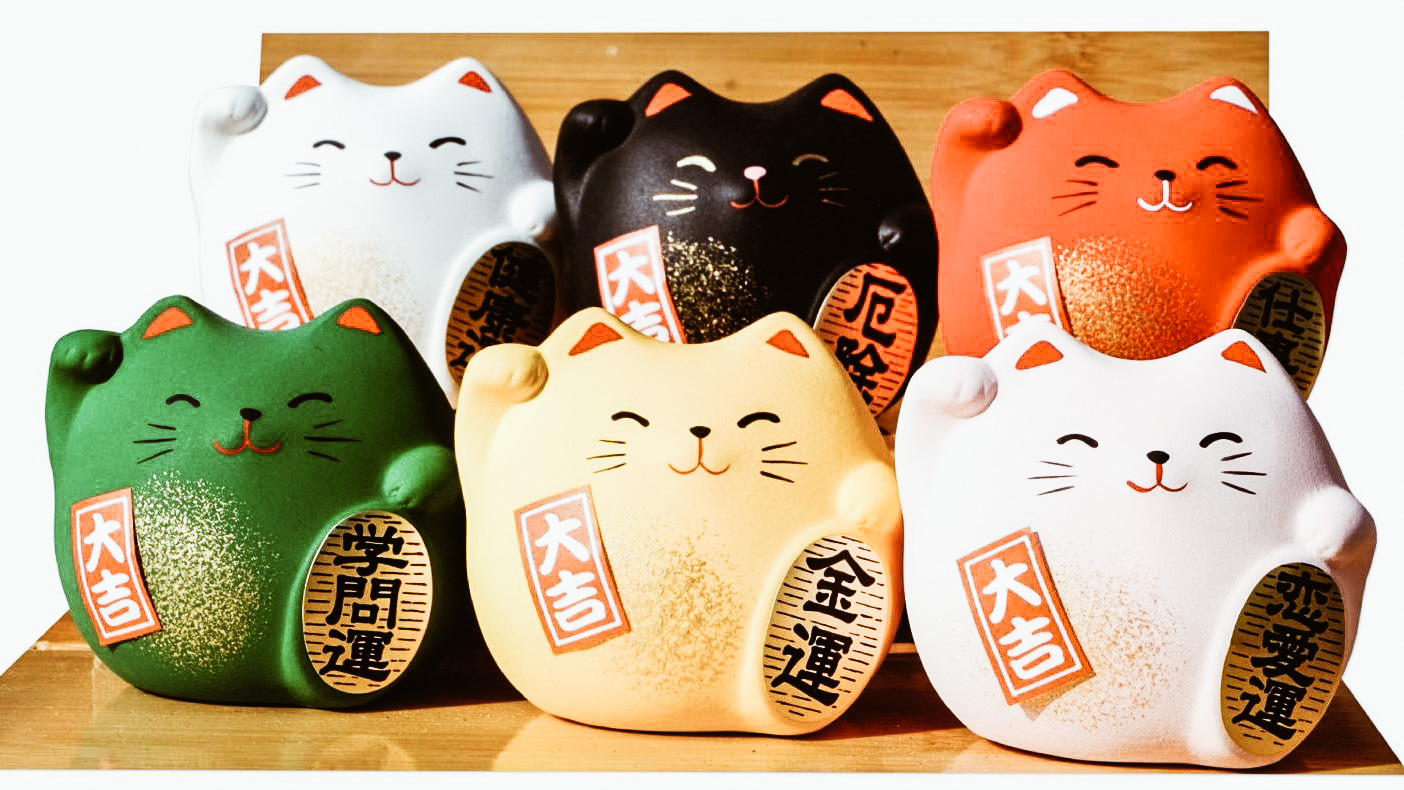
photo credits: www.dailyartmagazine.com
The origins
The origins are shrouded in mystery. There are some tales and the most famous is that of the samurai who, sitting in the rain under a large tree in front of a temple, was called with a nod of his paw. The samurai then headed towards him and at that very moment, a flash of light struck the tree under which he had been a few moments earlier. The cat then saved the samurai from certain death.
Another story tells of a shopkeeper who caught a cat in the rain, and the cat sat down in front of the shop, beckoning the customers to come in, as a sign of thanks.
Another legend, perhaps a little more bizarre, revolves around a courtesan who loved her domestic cat. The owner convinced that the cat was possessed, cut off his head in an attempt to exorcise it, just as a snake was about to bite the courtesan. The decapitated head flew in the air and landed on the snake, killing it instantly and saving the girl. The girl felt desperate because of the loss and, to give her a smile someone made her a statue of her cat, it seems that so was born the first Maneki-Neko.
The differences between Maneki Neko

photo credits: @punamkhokhar
The cats all look similar, but if you look closely, you will discover even very small variations that change their meaning.
For example, depending on the position of the paw, Maneki Neko has different meanings:
- Left leg raised: attracts customers and good business. So Maneki Neko with the left paw raised is suitable for businesses, shops and activities that take place mainly at night such as nightclubs, bars and discos.
- Right leg raised: wish money and good luck.
- Both legs raised: it can mean "double luck!" and protection from bad luck, although the gesture can also be seen as a celebratory cheer. Obviously the legs must be at a different height because at the same height they would mean "surrendered" and obviously this is not the case of our Maneki Neko.
We can also occasionally find a coin together with the cat and this, of course, represents prosperity, wealth and money.
The bib and bell are generally associated with protection and abundance.
Who to give the Maneki Neko to?
Obviously, depending on the person we want to pay tribute to, it will be positioned differently. How to find the right place? Read here:
- At home: it should be located in the southeast part of the house, which is the wealth/money area.
- For work: Maneki Neko is usually kept close to the entrances so that people who enter can actually see it. If this is not possible, it can be kept in the northeast area of the business premises.
- For offices: place your Maneki Neko as close to the office as possible.
Of course, even depending on the colour, it has a different meaning, let's go see them all:
- Tricolour: attracts good luck, wealth, prosperity.
- White: the color of purity, white Maneki Neko attract purity and happiness.
- Black: they are seen as guards. They protect against negative energies and evil. They also help drive out stalkers and provide security, comfort and peace.
- Golden colour is associated with wealth and money. This Maneki Neko attracts material and monetary benefits and therefore can be found a lot in shops, restaurants and other workplaces.
- Red: red, like black, is a protector and is used to protect against evil and disease. It is good to keep one in the children's room.
- Pink: pink is the colour of love, so this Maneki Neko attracts love and romance.
- Green: this Maneki Neko helps students to increase their concentration towards their studies, protecting them from diseases and helping them to heal if they need it.
- Blue: attracts peace, harmony and happiness for family members.
Three ways to say "I Love you"
"Ti Amo, I love you" How do you say that in Japanese? There are so many kinds of love, why should we express love only one way? The Japanese know a lot, they know that every kind of love needs a way to be expressed, a completely personal way.
Ti Amo / I Love you, here's how to say it in Japanese
Author: SaiKaiAngel | Source: SoraNews24
All this, you think, happens in a country that is seen as "cold and distant". Perhaps, thinking about this, we should understand that cold and distant is not, indeed. It is a country that gives the right importance to history, tradition and feelings.
Let's start looking at all the ways of showing love in Japanese, let's analyze them one by one.
1. Suki - I like you

This is the most used and most famous way because it is found in many conversations of Japanese animation. We analyze it first also because it is the least "deep", in fact, more than love, it can also mean "I like". You can safely say "Ramen ga suki desu" that no one will see you as a fool in love with a plate of ramen, but everyone will understand that you like ramen. So you can use suki to express an appreciation for a singer or an actor too.
That's why suki can be confusing. If you hear this word, you might run into the question of whether you really like us as a person or just as a ramen dish. It's a very flexible meaning, not at all secure, yet it is used at the beginning of every love story. When you want to propose to someone, you can use suki desu to do so. Very important at that point, it will be the WAY in which you do it, you have to make the other person understand that you have serious intentions and you are not just a dish of ramen. It takes conviction in the voice, it's not a simple "I like". With a great conviction, then you will have the right colour of falling in love.
2. Koi - I love you

We're not talking about the carp, but the second way the Japanese use to talk about love. We're in the field of romantic love here. Koi is the young and passionate emotion, but it's rarely used to say "I love you". Maybe we can bring it closer to "I love you" by Americans, which can mean both "love you" and "deeply care about you". However, the verb koi suru is closer to "to be in love" or "to be romantically involved". In fact, the word Koi is used for Koibito meaning lover.
3. Ai - Ti Amo

And here we come to the most famous, the most used term for the word Love.
Ai is a noun that means "love", but it can be used for something more than just romantic affection. Ai or the variant aijo, are also used to talk about the concepts of love for the family, for a platonic love or for all humanity. Used as a verb, it becomes ai suru.
Then why do we use suki desu to confess our love? Simply because ai is a much more serious and committed feeling. Ai suru would be a bit... frightening, especially for a story that's just begun. We have to go step by step and Suki desu is what allows us to do that. It would also be better to change the verb suru to shiteiru. By telling your partner to the shiteiru, you're showing an ongoing love, not just an initial crush. As far as I'm concerned, it's the term I like best, also because it's the first one I've ever heard.

What does that tell us? That Japanese is a very romantic language despite what you hear. Are Japanese cold? All impression. Japanese can give the right meaning and depth to anything, even love. What term would you use for your love?
Japanese Patterns
The Japanese are famous for their style and patterns related to kimono fabrics, pocket handkerchiefs and other items that have made history and remain one of the symbols of the land of the Rising Sun. Today we share with you some of the most famous patterns and we will try to analyze them together.
Traditional Japanese patterns, what they are and their meaning
Author: Erika | Source: Nippon.com
The Japanese tradition wants kimono, but also soft towels and other small Japanese objects to be decorated with precise fabrics. In fact, we often find very precise decorations on this type of fabrics. Every decoration and every pattern has a precise name and a well-defined origin that reveals hidden meanings with precise purposes. Here is a shortlist of the most traditional patterns.
Pattern: Uroko (Scales)

Created through the combination of triangles, this fabric resembles the skin of a snake or fish. In tradition, samurai wore clothes with this pattern as a protective talisman against evil.
Kōjitsunagi (Interlaced Kō Characters)

As we often find also in Western culture, the decorations of many fabrics correspond to a precise character repeated in a graphic way. In fact, this model takes its name from the use of the character 工 (kō), repeated interlocking so that the characters seem to stretch infinitely. This type of pattern is associated with luck and is a typical drawing used in materials to create kimonos.
Pattern: Asanoha (Hemp leaves)

Literally called Hemp Leaves, this Japanese pattern has a strong vitality just like the fibre of the same name. Hemp is a plant that grows vigorously without much care. In fact, this is the focus of the pattern that is often used in the creation of kimonos for children and infants in the hope that they too will grow strong.
Yabane / Yagasuri (Arrow feathers)

This Japanese pattern is based on the stylization of hawk, eagle and other birds feathers used in the manufacture of arrows. Behind this type of fabric, as always, we find a deep symbolism. In fact with the pointing to the target, arrows have long been used as a good omen. However, once shot, the arrows do not return, and for this very reason, in the Edo period, brides were given kimonos with this design as a good luck charm. In fact, this pattern was a kind of good luck charm to make sure that new brides didn't have to return to their family home.
Also, in the late seventies, this pattern became famous thanks to Benio, the main character of Haikara-san, a manga for teenagers. In fact, she wore this type of kimono at school and this led to the combination with burgundy hakama, a type of split skirt. This led teenagers to make this Japanese pattern a popular combination at graduation ceremonies.
Pattern: Same Komon (shark skin)

Thanks to the superimposed arcs in small dots, this Japanese pattern is reminiscent of shark skin and hence its name. In the tradition we often find it used by the Kishū Tokugawa family, to which belonged the Shōgun Tokugawa Yoshimune (1684-1751).
Seigaiha (Blue ocean waves)

One of our favourites, this model is reminiscent of the fan waves of the open sea. The name comes from the ancient gagaku court dance called Seigaiha. During these ancient performances, the dancers wore costumes with this very motif.
Shippō (Seven treasures)

With circles that overlap in quarters resembling petals, their centre forms a shining star. This pattern is given the meaning of good omen for the prosperity of your descendants, good relationships and to bring harmony into your lives.
Pattern: Kikkō (Turtle)

Another auspicious pattern, this design comes from the shape of the turtle shell (hexagon) and that's where it takes its name from. This not only represents luck but also longevity. Depending on how it is composed, the hexagons form different variations for this type of design, including Kikkō hanabishi and Bishamon kikkō. In the former, the centre of the hexagons forms flowers, while the latter is formed by joining three hexagons.
Ichimatsu (chequered)

With several coloured squares arranged alternately, this pattern is very similar to ginkgoam. A common fabric since ancient times, this pattern became famous as Ichimatsu in the 18th century thanks to the kabuki actor Sanogawa Ichimatsu. In fact, the artist loved to use this fabric on his hakama costume. Today we find it in the official logos of the Tokyo 2020 Olympic and Paralympic Games.
Tachiwaki / Tatewaki (rising steam)

With two curved lines representing the steam rising in a stylized way, this pattern was often used in kimonos for noble and high-ranking people in the Heian period. The way these curved lines are formed serves to create variations called Kumo tatewaku (cloud) and Sasa tatewaku (bamboo).
Karakusa (Winding Plant)

Introduced in Japan with the arrival of the Silk Road, vines and spirals extending in all directions symbolize longevity and prosperity. However, this pattern became famous as a design for furoshiki cloth that thieves used to take away stolen goods. This suggests that this pattern was very popular because in every house you could find a furoshiki with this design.
Kanoko (Fawn)

Resembling the spotted back of a fawn, this pattern is created by hand using a special dyeing technique. However, the laborious process makes it a highly sought after fabric, in fact, kimonos with an all-over kanoko pattern are considered objects of great luxury.
Hishi (Diamond)

Pattern with geometric shapes, this pattern is created when two parallel lines intersect. We often find it on the ceramics of the ancient Jōmon period. Moreover, we find this pattern in different variations that include Waribischi, four diamonds combined to form a single diamond, and Hanabischi, where the petals of the flowers are shaped in diamonds.
Mameshibori (Mame Tie-dye)

This patter was the most common pattern on bath towels in the Edo period. In fact, the name comes from a play on words that means both peas or beans, is robust and healthy. This pattern represents the hope to stay healthy and most of the patterns of the time are created with stencil dyeing or printing techniques. However, under the name of shibori, we can understand that originally the design was made by hand with a particular dyeing technique. In fact, we note that in antiquity, these shapes were much more irregular than the prints of today.
Things to do in quarantine: Building a miniature Akihabara
Building miniature Akihabara in your home
written by: Erika | source: TimeOut Tokyo
Although things are starting to get better here in Italy, we continue our section on things to do in quarantine, and today we share with you how to build a mini Akihabara.

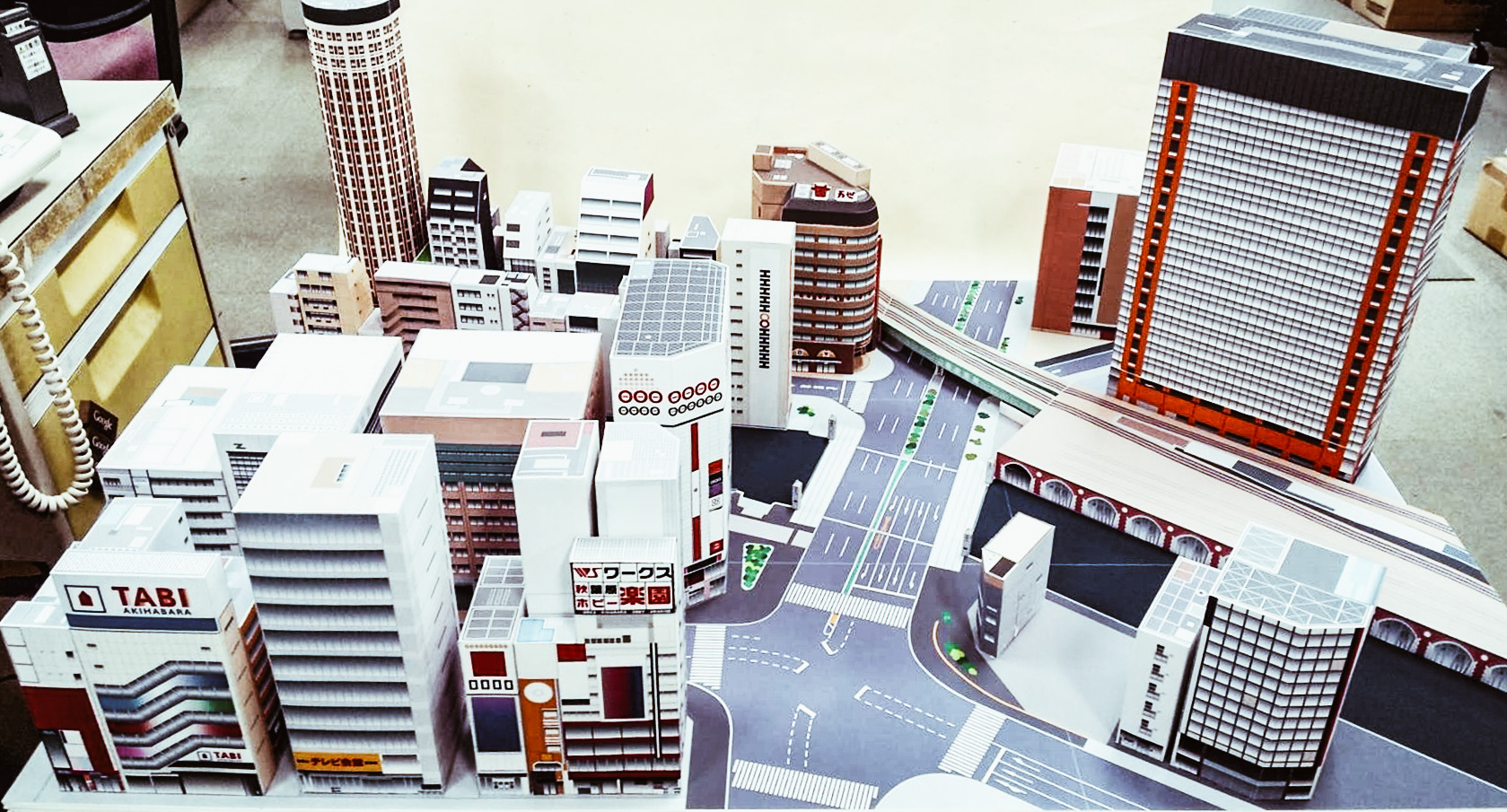
Akihabara is one of the favorite destinations for all otaku and fans of Japan, a historic district dedicated precisely to everything that is manga, anime, and video games. In this delicate moment, we are not yet allowed to travel. However, there is no need to take the plane to get to know new places and visit the ones we have already seen. In fact today we share with you the opportunity to recreate miniature Akihabara directly from your home!
In Akihabara, there are not only many places dedicated to that world that we would call nerd, but there are also many clubs and shops dedicated to various hobbies. One of them is the Mansei Club, a corner offering a variety of fun games, origami instructions, and paper models all for free.
If you're still stuck at home and don't know what to do, you can now recreate the iconic Tokyo neighborhood with these detailed paper models. In fact, the streets of Akihabara are all reported in these detailed scale reproductions. Creating this model is very simple, just follow the instructions listed in these PDFs available for free for download. In fact, these reproductions perfectly show the buildings of Akihabara and also where these buildings must be positioned. Although the instructions are in Japanese, it is actually very simple to follow them also thanks to the various illustrations.
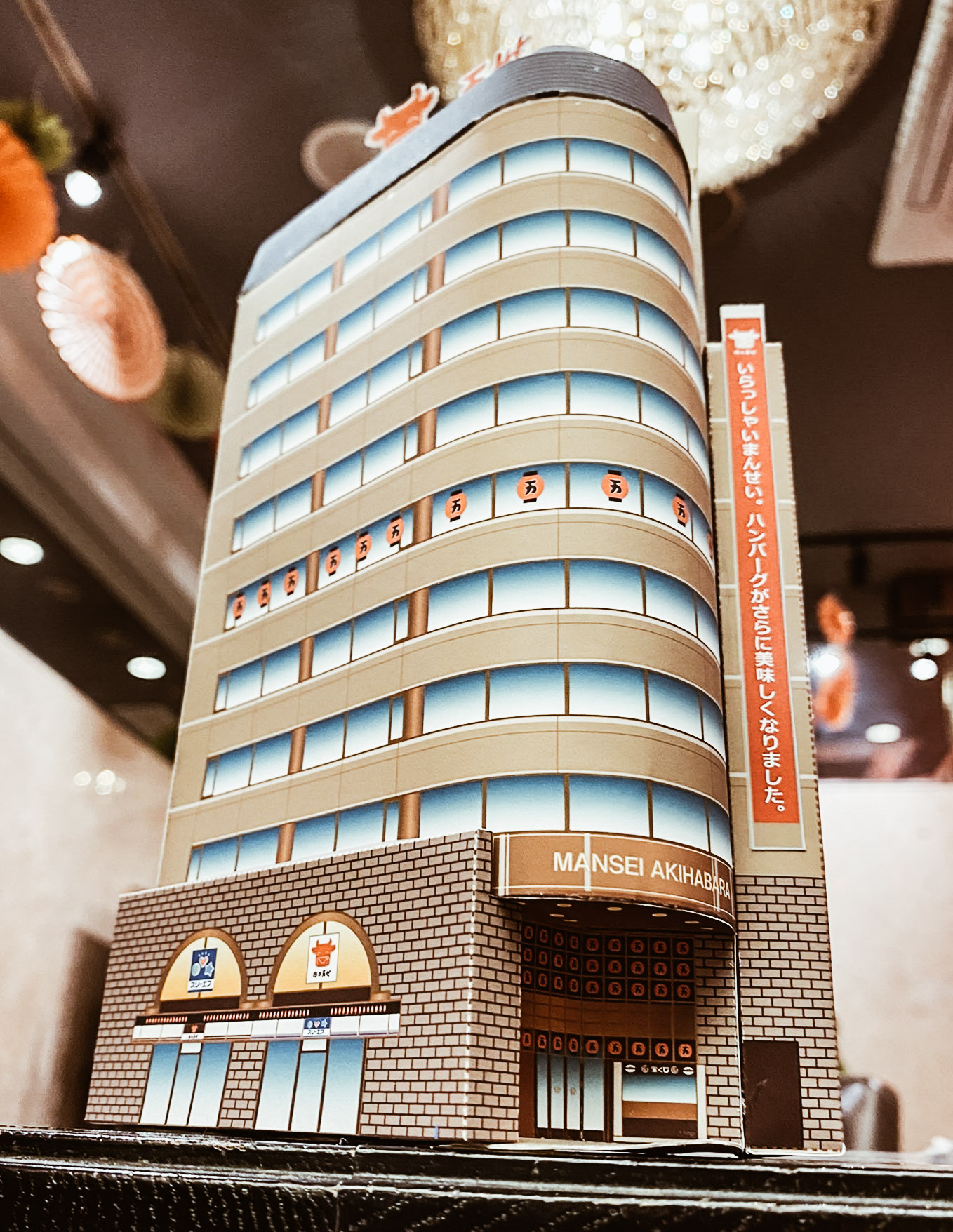
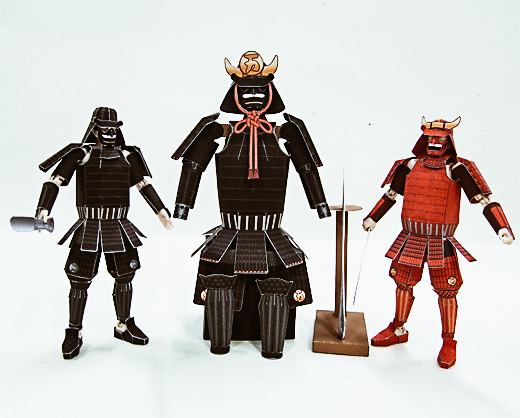
However, if building an entire neighborhood seems too complicated for you, don't worry there are many other possibilities. In fact, Niku no Mansei offers more than 50 paper models that you can download for free. With a design that varies from reproductions of famous Samurai up to reproductions of the most famous Japanese foods. In short, here we find the opportunity to satisfy every taste and every type of hobby! You just have to choose your model, download it, and get to work! We are curious to see the results!
Things to do in quarantine: Learn Japanese cuisine
Learn Japanese cooking with 5 YouTubers
written by: Erika | source: TokyoWeekender
We continue our column on things to do in quarantine and today we talk to you how to learn Japanese cuisine with the help of 5 YouTubers.
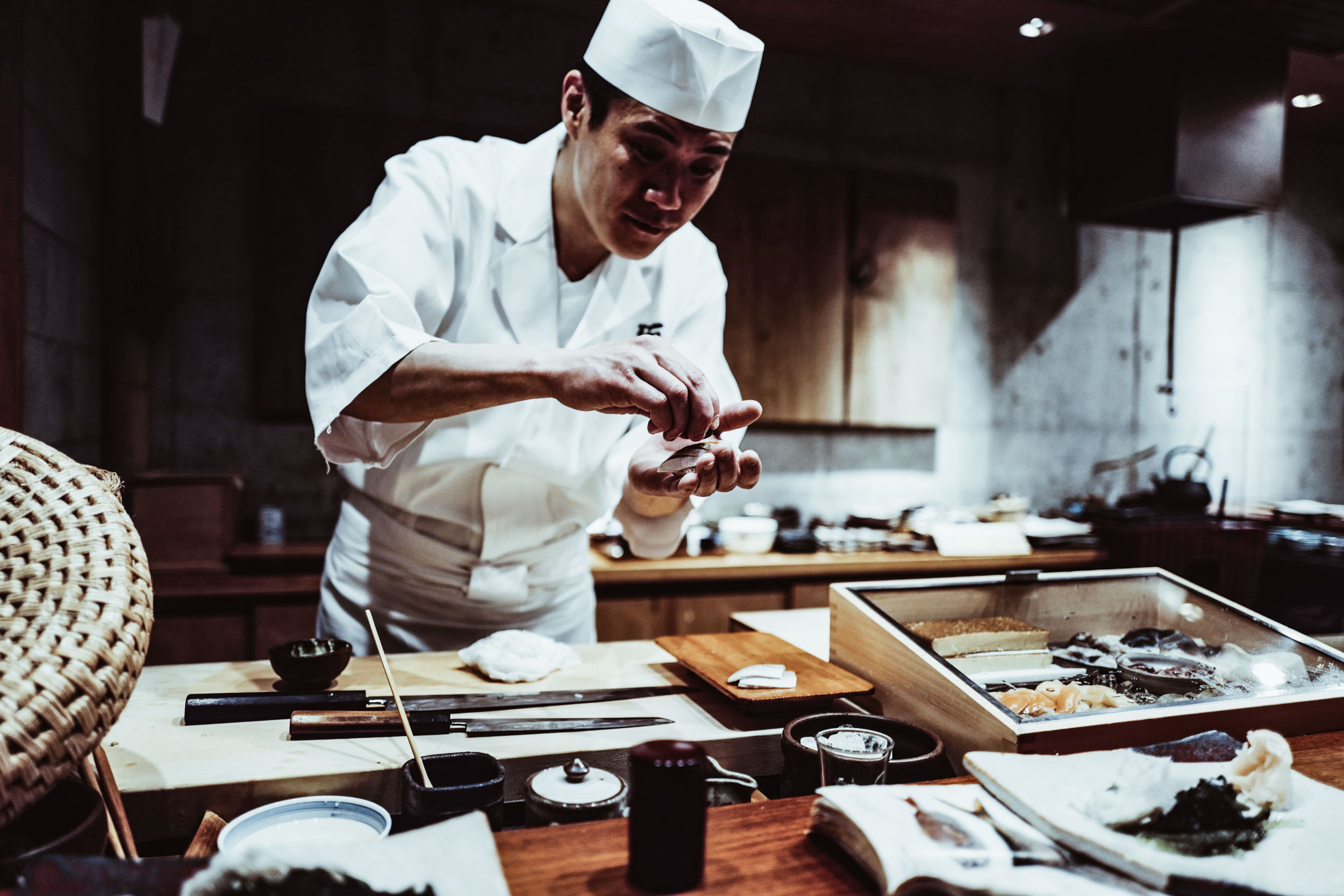
In these lockdown days, we are all trying our hand at new recipes and experimenting with new combinations of flavors. Here are 5 YouTubers to follow in order to learn Japanese cuisine and try out some dishes at home!
Tasty Japan
They are our favorites. A lot of simple recipes to follow, with all the ingredients easily recoverable in any part of the world you live in. From desserts to first courses, from quiches to second courses. Authentic and fun, Tasty Japan engages the viewer with educational videos and many guests. Almost all the videos have English subtitles and all the presenters are very funny and full of energy, making even the most complicated dishes easy to do. Videos that fall into the #foodporn category par excellence, make sure you're on a full stomach when you try to cook these delights.
Ochikeron
Mother of two, the protagonist of the channel Ochikeron creates dishes to allow the whole family to cook together. In fact, the simplest dishes on the channel can be cooked together with the little ones too. However, more complicated dishes that require more time and energy are available for all those fearless enough to try all these new recipes. All this makes this channel a unique world for all those kitchen projects to be created together. Furthermore, if you are fed up with the usual dinners, this is the right place to find new ideas.
Japanese Cooking 101
With a huge selection of videos, Japanese Cooking 101 not only offers dishes easy to make, but more complicated processes can also be found. From Karaage to fried rice with chanko nabe, a perfect hot-pot style dish for the winter, this youtube channel is a real catalog of Japanese cuisine. In fact, we can find a lot of recipes to experiment and each video shows a complete list of ingredients together with instructions on how to create the dish. Although other channels have some entertainment, Japanese Cooking 101 has a more didactic and dry approach, but very easy to follow.
Diaries of a Master Sushi Chef
If, however, like many Westerners you love sushi too, Hiroyuki Terada's channel is the one for you! The diaries of this master sushi chef will teach you how to juggle knives, fillets, and much more. In fact, on this channel, you will find methods to create delicious sushi but also dishes such as chicken teriyaki and many other izakaya-style delights. With collaborations of the caliber also of Chef Ramsey, this is the channel for all those who want to seriously try their hand at learning the art of sushi.
Aki’s Japanese Recipes for Vegans
Vegan and vegetarian restaurants are difficult to find in Tokyo, this has led to the creation of various YouTube channels including that of Aki. In fact, on this channel, you can find the best recipes for all those who love unconventional cuisine. A real sensorial experience in HD for an accessible channel and with the instructions written in Japanese and English. In addition, Aki, the protagonist of the channel, always takes the time to better explain his recipes and ensure that the dishes always look good.
Things to do in Quarantine: the best podcasts about Japan
The best Podcast about Japan
written by: Erika | source: TimeOut Tokyo
Let's continue our feature on things to do in quarantine and today we talk to you about some podcasts dedicated to Japan.
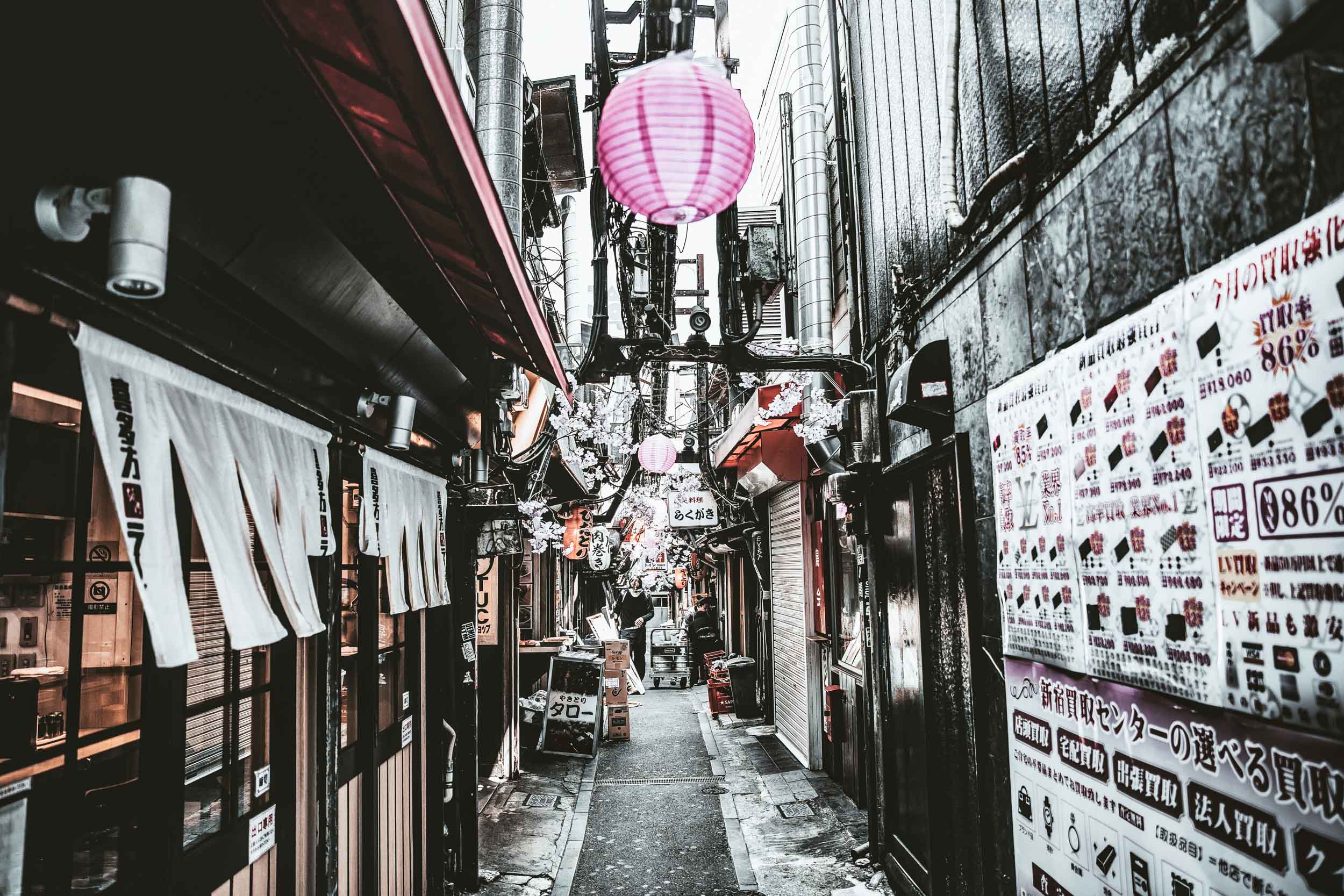
The COVID-19 emergency has practically made it impossible to plan trips for at least another year. However, for all fans of Japanese culture, today we share with you an easy and fun way to learn more about this topic. In fact, there are several podcasts that can fill this void by helping you discover Japan's many facets. In fact, through these audios, it will be possible to discover the many hidden aspects and facets of the Rising Sun without having to face crowded flights and trains.
For example, are you aware of why spider lily flowers are located near Japanese cemeteries and rice fields? Do you know who the pioneering women of the Rising Sun were? These podcasts will not only delve into the food, history, and legends of this country but will also answer questions you didn't even know you had. So, in this moment where we cannot go out and travel, let these podcasts take you on a few minutes journey through Japan.
Japan Eats - Learn about Japanese cuisine

Japan Eats is a podcast of a historic Brooklyn-based radio focused on food. Presented by Akiko Katayama, Japanese cuisine journalist and director of the New York Japanese Culinary Academy. Here we talk about everything from the various trends of Japanese cuisine, to drinks and much more. In one of the recent episodes, Akiko focused even on how to live a vegetarian life in Japan, the art of the Yakitori and more. The podcast already has more than 180 episodes with a new one every week.
Uncanny Japan - All Japanese legends in one podcast
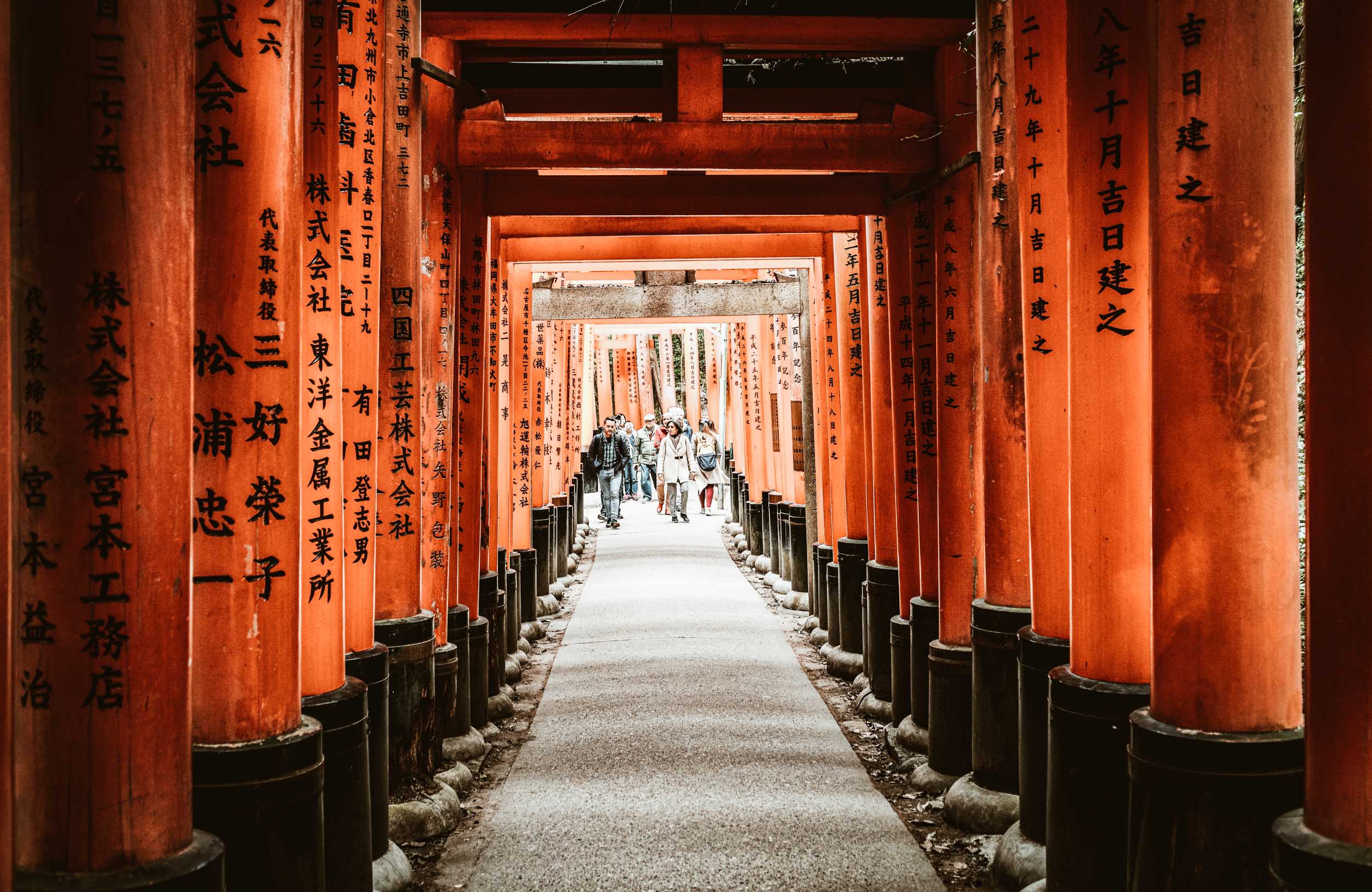
Theresa Matsuura, an American author who has lived half her life in a fishing village in Japan, presents Uncanny Japan. In this podcast, Matsuura talks about those parts of Japanese culture that are often invisible or inaccessible to anyone who does not speak the language. At the same time, it offers an insight into local customs, legends, folklore and superstitions of the rising sun. Ready to immerse yourself in the imaginative and sometimes even spooky Japanese fairy tales?
History of Japan - Learn Japanese history
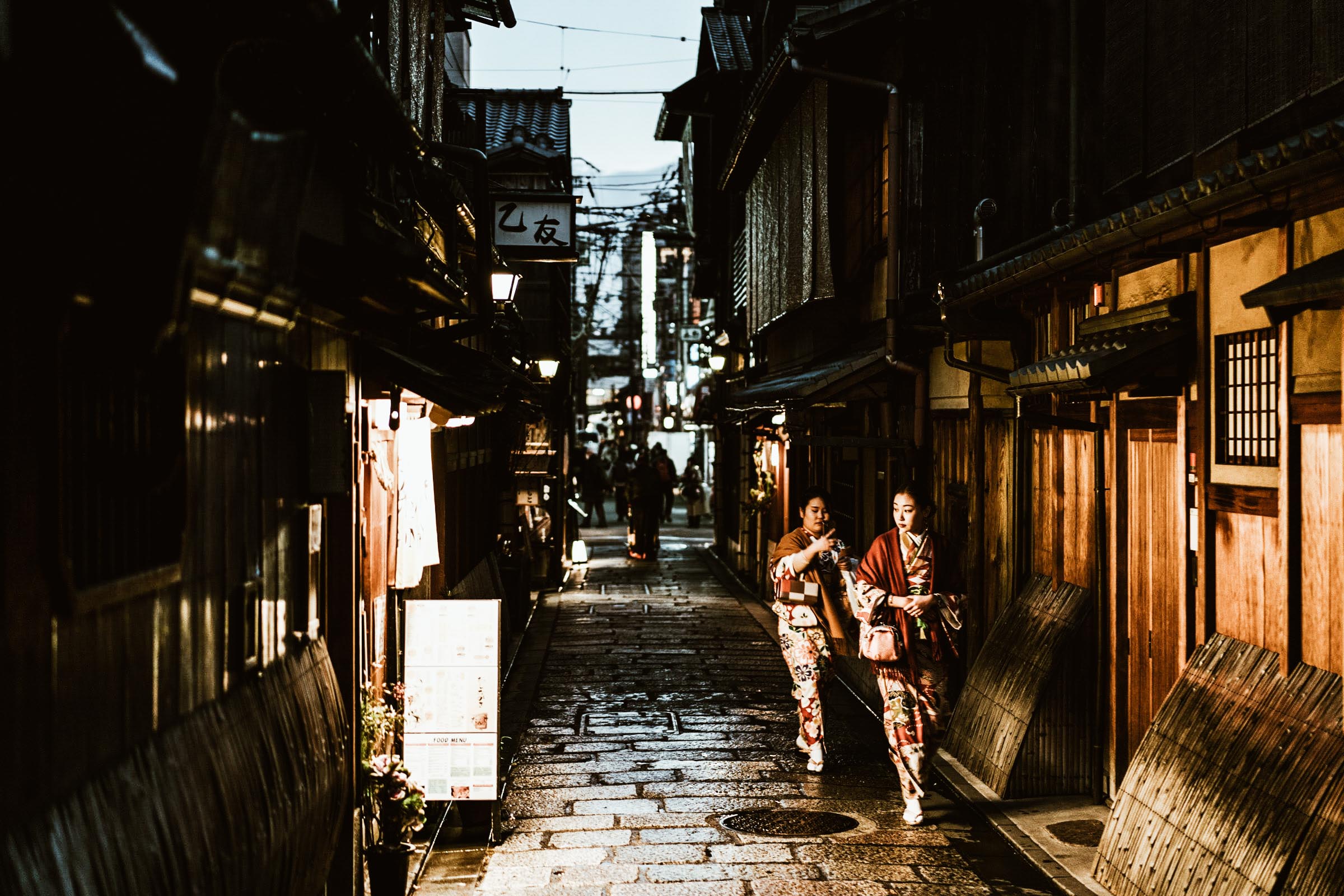
Isaac Meyer, a teacher with a PhD specializing in modern Japan, leaves nothing hidden in this historical podcast. From ancient to modern Japan, passing through poets, political scandals, economic booms, samurai, geishas and much more. Indeed, this podcast is an in-depth look through the history of the rising sun in each episode. Informative but also fascinating to hear, History of Japan has more than 300 episodes that can keep you company in this lockdown period.
Voices in Japan - Life in Japan

Ben and Burke, expats in Japan who live in Hokkaido, share their life experience in the land of the Rising Sun. The podcast Voices in Japan talks about their life from work to studying the Japanese language, and also learning the customs of the nation and much more. The weekly episodes include general topics related to living in Japan such as a look at the Japanese health system. In addition, the talk also revolves around the love of technology, Sumo and the potential benefits of the Japanese diet. Whether you live in Japan or just want to hear more about life experiences, this podcast is ready for you.
Sake on Air - All about the world of Sake

For all fans of Sake and shochu, Sake on Air is the podcast made for you. The experts of this famous Japanese drink share their knowledge in each episode, inviting us to this virtual dinner. In fact, in each episode, we find a different topic such as new trends in manufacturing, stories from producers but not just this. We can also learn about the various flavors, the difference between the rice used and how to combine the various flavors of Sake with food. So, if you are also curious, arm yourself with a glass of wine or your favorite sake and listen to this podcast!














